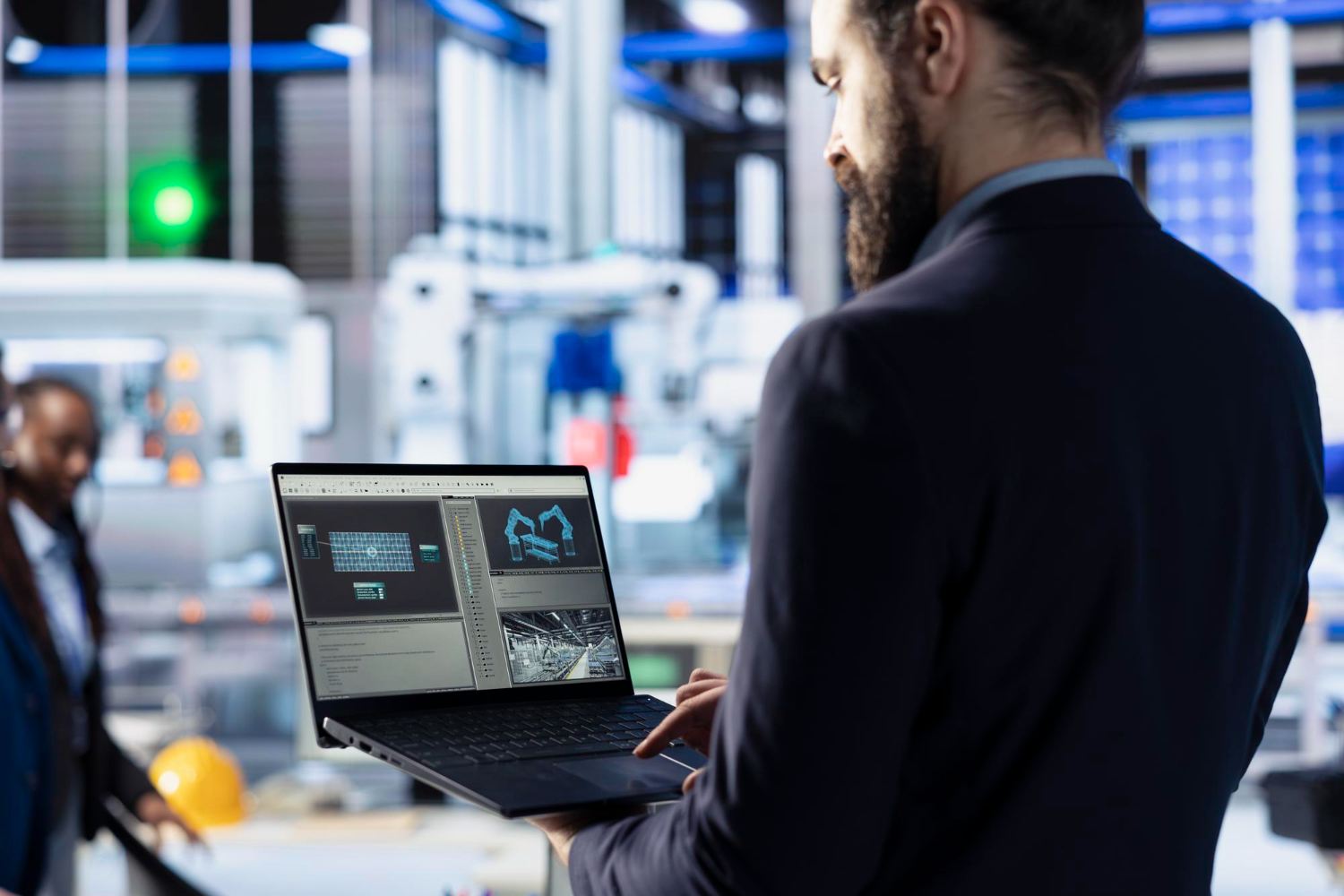
Generative AI and Risk Management in 2025: A New Era of Insight, Trust, and Value
Every industry is rethinking risk. From manufacturing plants to global finance, traditional safety nets built on manual reviews and static policies are no longer enough. Decision makers crave real-time awareness, deep analysis, and tools that adapt as quickly as new risks arise.
Generative AI steps right into this gap. It’s not just another line of code or a dashboard widget. For organizations working with partners like iTCart, generative AI integrates into day-to-day actions, learning from historical data and ongoing events, signaling early warnings, and boosting accuracy.
Let’s explore how generative AI is redefining risk management, why challenges are worth addressing, and what 2025 holds for those who choose to lead with smarter AI.
Opportunities — Turning Risk into an Advantage
1. Early Warning, Smarter Decisions
Generative AI tools, built with platforms like iTCart’s AiXManufacturing, don’t just crunch numbers. They recognize emerging patterns across massive and varied datasets, whether it’s sensor signals from factory equipment, financial trends, or social sentiment. When they spot a deviation or a link that might matter, managers are notified with evidence, not just guesses.
For example, a plant manager gets an alert about a machine’s rising temperature trend, days before a breakdown would have halted operations. Finance teams can spot unusual budget deviations, while inventory systems highlight supply vulnerabilities before shortages hit. This isn’t hypothetical; it’s reality for iTCart clients using AI-powered dashboards that blend data from every corner of their business.
2. Scenario Simulation and ‘What If’ Analysis
What if there’s a sudden disruption in the supply chain? Or market volatility hits investment portfolios? Generative AI simulates these scenarios, using synthetic data matched with real conditions to test how organizations will respond before catastrophe strikes. Stress testing, once a painful and slow process, becomes dynamic and actionable.
Rather than react to bad news, teams can rehearse possible futures and pick better responses before they’re forced to make them under pressure.
3. Active Compliance, Not Just Auditing
Regulations and internal policies change fast. Instead of waiting for scheduled reviews, generative AI continually scans new regulations, model outputs, and documentation for compliance gaps and risks. Automated alerts and suggested corrective actions become routine, freeing risk teams for strategic conversations instead of endless checklists.
With iTCart’s platforms, compliance isn’t a separate ‘task’; it’s woven into every business activity, with AI performing routine checks in real time, supporting defender teams and instilling confidence with regulators and partners.
4. Reducing Human Blind Spots
Humans are good at recognizing some risks, but often miss subtle, emerging ones, especially buried in unstructured data like emails or contracts. AI doesn’t get tired or suffer from cognitive biases. Which means fraud, bias, misconduct, and even hidden operational failures can be identified well before human review would ever find them.
Challenges: Navigating the Road Ahead
1. Data Privacy and Security
Generative AI models thrive on data variety and volume. But with increased data access comes privacy risk and new vulnerabilities.
Organizations need robust guardrails: secure architectures, red teaming (actively testing models against threats), and clear data retention policies. iTCart’s solutions deploy these controls natively, but leaders must still educate their teams about what is being automated and what should remain subject to human judgement.
2. Model Explainability
It’s one thing for an AI system to raise a red flag. It’s another for managers and regulators to trust why it did so. Without transparency, there’s a risk that decisions appear arbitrary or unjust, undermining the very credibility that effective risk management depends on.
Tools and platforms now employ clearer explanations for each AI-driven alert and recommendation, combining statistical reasoning with plain language summaries. iTCart’s AiXManufacturing solution, for example, offers natural language summaries and annotated insights, helping every stakeholder understand both the ‘what’ and ‘why’ behind AI alerts.
3. Bias and Fairness
Every AI system reflects the data it’s trained on. If historical data contains bias, for example, in lending decisions or inventory allocations, then AI may repeat or even amplify these patterns.
Effective risk management calls for continuous monitoring, retraining, and diversity in development teams. It’s not a set-and-forget solution. Companies must question outputs and review practices regularly, sometimes treating LLMs like APIs: testing, documenting, and versioning their behavior to prevent drift and unexpected bias.
4. Integration With Legacy Systems
Many businesses still depend on legacy databases, hardware, and siloed reporting. AI platforms must fit within these frameworks without causing disruptions or security holes.
iTCart’s technology stack is engineered for seamless integration, but every deployment involves assessment and phased rollouts, ensuring that the transition is smooth and secure.
2025 Predictions: What to Expect and How to Prepare
1. Real-Time Risk Visibility Is the New Standard
The notion of quarterly reviews or annual audits is fading. Organizations will demand on-demand insights into risk exposure, unconventional threats, and compliance posture.
Managers will interact with role-based AI dashboards tailored to plants, departments, or entire enterprises, making decisions with context and speed, not just intuition.
2. Risk Management Is Proactive, Not Reactive
Generative AI will automatically simulate crises, recommend mitigations, and flag the earliest signs of stress, whether from new regulations, market events, or operational breakdowns. The expectation won’t be to avoid every risk, but to demonstrate preparedness with evidence, informed actions, and documented review cycles.
3. Certification and Governance Go Front-and-Center
Trust will be earned by showing results and passing audits from independent certifying bodies. As AI in risk management grows, organizations will embrace certification frameworks, both to comply with regulations and to reassure clients, investors, and stakeholders that their programs are resilient and responsible.
4. Teams That Understand AI Succeed
Training isn’t a once-per-year event. Businesses will educate every stakeholder, from machine operators to finance directors, about safe AI use, risk management basics, and what automated systems can and can’t do.
Successful organizations will create cultures of learning, openness, and questioning, making judgment, not just technology, their core asset.
5. New Use Cases Emerge Monthly
From simulating environmental risk to tracking real-time labor productivity and inventory health, generative AI will help managers optimize every corner of the business. Companies like iTCart already offer predictive maintenance for manufacturing, financial deviation tracking, and compliance automation, with results measured not in promises, but in reduced costs, fewer defects, and faster reporting.
iTCart SaaS Product – AiXManufacturing’s Unique Selling Proposition
Moving from theory to real-world impact means working with partners that build for these challenges. iTCart blends domain experts, a modular technology stack, and deep AI integration across manufacturing, supply chain, finance, and compliance functions. AiXManufacturing platform stands out for:
- Unified, role-based dashboards merging plant, machine, labor, inventory, and finance data
- Predictive insights and scenario simulations tailored to user goals
- Automated, explainable real-time alerts and recommendations for every user role
- Seamless integration with existing ERP, legacy hardware, and cloud apps
- Ongoing support and phased rollout, maximizing ROI faster than the industry average.
Clients using AiXManufacturing routinely report:
- Lower downtime due to early predictive alerts
- Faster, more reliable compliance tracking
- Reduced manual burdens in reporting and analysis
- The ability to benchmark performance across plants globally, spotting inefficiencies immediately.
Engaging the Future: Interactive Risk Management Journeys
Imagine a workday powered by generative AI:
- Your dashboard shows live metrics, not static numbers from last week. An inventory anomaly is flagged, and you receive actionable suggestions in plain language before you even need to ask.
- You explore scenario planning with a few clicks; what if market demand drops 20 percent? How would your plant respond? Which teams should be informed or retrained? AI lays out possible paths and shows the tradeoffs.
- An email alert arrives, not with panic, but with context and options for next steps, all documented for future review.
- When reviewing compliance, you see not just gaps, but explainable rationale backed by regulatory texts and best practices.
- Your team uses insights not just to avoid risks, but to seize new opportunities visible only through AI-powered analysis.
Final Thoughts: Trust, Transparency, and Action
Generative AI isn’t a magic wand, but it offers something better: clarity, speed, and unexpected insights. The question for leaders in 2025 isn’t “Should we adopt AI?” but “Are we ready to build trust, skill, and processes around how AI can help us manage risk as a true partner?”
For those working with iTCart and its AiXManufacturing platform, the future of risk management is a continuous, collaborative journey, where technology serves real people, and every step forward is grounded in evidence, transparency, and genuine value.
2025 is here, and the next chapter has already begun.






